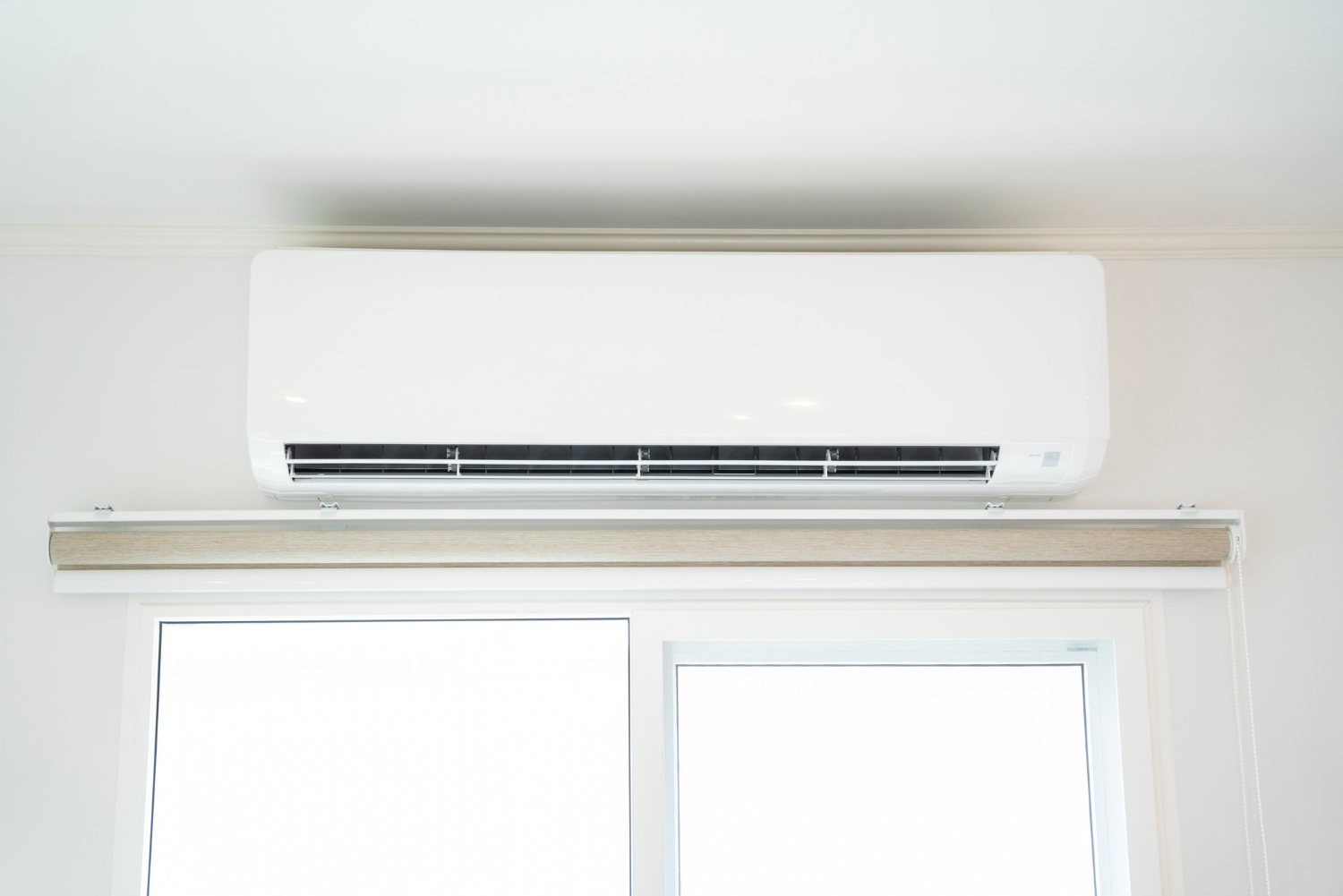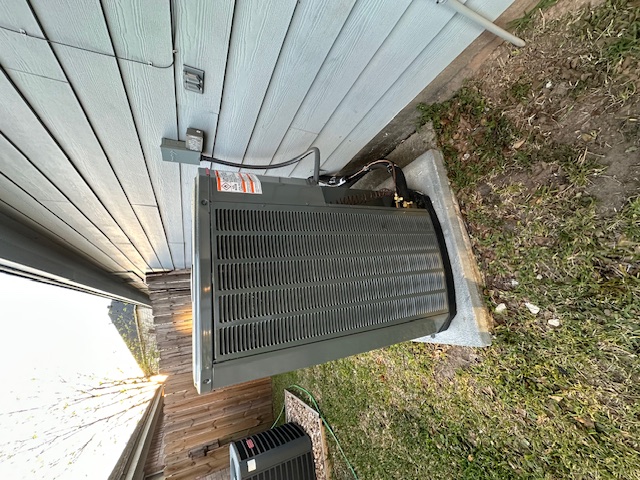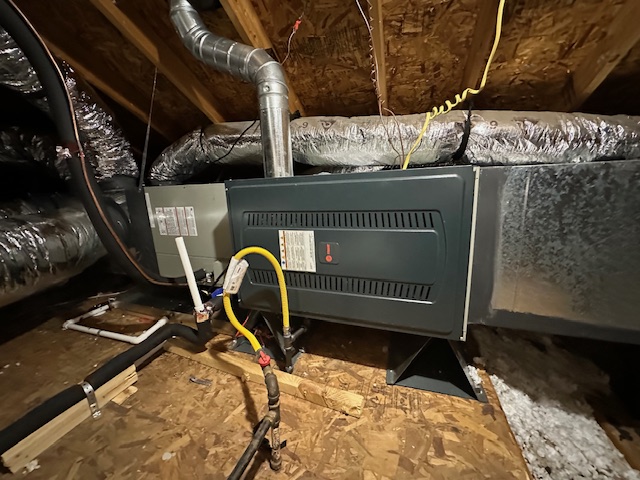Your air conditioner should cycle on and off throughout the day rather than run constantly. A properly working AC unit typically runs for 15 to 20 minutes per cycle, cycling 2 to 3 times per hour during hot weather. This pattern keeps your home comfortable while using energy efficiently.
Many homeowners worry when their AC seems to run too long or cycles too often. The truth is that several factors affect how long your system should operate. Your home's size, insulation quality, and outdoor temperature all play important roles in determining normal run times.
Fall weather brings unique challenges as temperatures fluctuate throughout the day. Learning what's normal for your system means you can catch issues before they become expensive repairs.
In this article, you’ll learn how long should AC run in October, what drives normal cycle length, and simple tweaks to reduce humidity, noise, and energy costs.
Below, we’ll walk through each important aspect.
- How AC cycles behave in mild fall weather
- Factors that change how long your AC should run
- Practical benchmarks and quick self checks
- Easy maintenance moves that optimize cycle length
- Getting expert help in Houston
Keep reading! Understanding proper AC cycling helps you spot problems early and save money on energy bills.
How AC cycles behave in mild fall weather
Fall weather changes how air conditioning systems operate, with cooler October temperatures leading to longer periods between cycles and different patterns than summer months. Understanding these seasonal shifts helps homeowners recognize normal operation versus potential problems.
What a normal cycle length looks like in October
October temperatures typically allow AC units to run shorter cycles compared to hot summer days. Most systems cycle for 10-15 minutes when outdoor temperatures drop into the 70s and 80s.
The cooling cycles happen less frequently during mild fall weather. Instead of running 2-3 times per hour like in summer, units may only need to operate once every 45 minutes to an hour.
Typical October AC patterns:
- Cycle duration: 10-15 minutes
- Frequency: Every 45-60 minutes
- Daily runtime: 4-8 hours total
Cool morning and evening temperatures mean the AC stays off for extended periods. The system works hardest during afternoon hours when temperatures peak.
Homes with good insulation may see even longer breaks between cycles. Poor insulation causes more frequent cycling as cool air escapes faster.
Short cycling versus long runs and what each one signals
Short cycling in fall weather often indicates equipment problems rather than normal seasonal changes. Cycles lasting less than 5-8 minutes suggest the system turns on and off too quickly.
Common causes of short cycling:
- Dirty air filters restricting airflow
- Refrigerant leaks reducing cooling capacity
- Oversized units that cool too quickly
- Faulty thermostat sensors
Long continuous runs during mild weather point to different issues. Units running 30+ minutes without stopping may struggle to reach the set temperature.
Signs of problematic long cycles:
- AC runs constantly despite mild outdoor temps
- Indoor temperature never reaches thermostat setting
- System feels warm instead of cool
- Higher than normal energy bills
Normal fall operation shows the AC reaching the target temperature and shutting off predictably. The system should maintain consistent indoor comfort without excessive runtime.
Thermostat settings that quietly shape run time and comfort
Thermostat placement affects how often the AC cycles during fall weather. Units installed near windows or heat sources trigger more frequent operation than necessary.
Setting the temperature too low forces longer run times even in mild weather. A 72-74°F setting works well for most homes during October temperatures.
Smart thermostat features for fall:
- Programmable schedules reduce runtime when homes are empty
- Temperature sensors prevent false readings from hot spots
- Fan settings help circulate air without full cooling cycles
The fan setting impacts cycle behavior significantly. "Auto" mode runs the fan only during cooling cycles, while "on" mode runs it continuously.
Programmable schedules save energy by raising temperatures during work hours. Many homeowners set the temperature 2-3 degrees higher when away from home.
Regular thermostat calibration ensures accurate temperature readings. Miscalibrated units may cycle too often or run longer than needed to maintain comfort.
Factors that change how long your AC should run
Your AC run time depends on several key conditions working together. Outside weather, your home's setup, and equipment condition all play major roles in determining cycle length.
Outdoor temperature, humidity, and insulation made simple
Hot outdoor temperatures force your AC to work harder and run longer cycles. When it's 95°F outside, your system might run 20-25 minutes per cycle instead of the typical 15-20 minutes.
High humidity makes your AC work extra hard. The system must remove moisture from the air along with heat. This dual job extends run times by 5-10 minutes per cycle.
Poor insulation creates longer run times:
- Thin attic insulation
- Gaps around windows and doors
- Old or damaged weatherstripping
- Single-pane windows
Good insulation keeps cool air inside and hot air outside. Homes with proper insulation see AC cycles that are 20-30% shorter than poorly insulated homes.
Filter condition and airflow that speed up or slow down cycles
ENERGY STAR advises checking HVAC filters monthly and changing them at least every 3 months; a dirty filter slows airflow and makes the system work harder and longer, raising energy use.
Dirty air filters block airflow and make your AC struggle. A clogged filter can double your run times because less cool air reaches your living spaces.
Signs your filter affects run time:
- Cycles lasting 25-30 minutes or more
- Weak airflow from vents
- Rooms that stay warm despite AC running
Clean filters allow proper airflow. Your system cools your home faster with good airflow. This means shorter cycles and less energy use.
Blocked vents and closed doors also slow cooling. Each blocked vent adds 2-3 minutes to your cycle time.
Unit sizing clues when the run time feels off
An oversized AC unit runs in very short cycles of 5-10 minutes. These quick cycles don't remove humidity well. Your home feels cool but sticky.
Undersized units run constantly or in very long cycles of 30+ minutes. The system can't keep up with cooling demand. Some rooms never reach the set temperature.
The U.S. Department of Energy notes that proper sizing is critical; an oversized AC won’t adequately remove humidity, which leads to short cycling and comfort problems.
Proper AC sizing creates these patterns:
- 15-20 minute cycles during moderate weather
- 20-25 minute cycles during hot weather
- 2-3 cycles per hour
A correctly sized unit matches your home's cooling needs. It runs long enough to remove heat and humidity effectively.
Practical benchmarks and quick self checks
Most AC units should cycle for 10-20 minutes at a time with breaks between runs. Longer cycles of 30 minutes may signal problems, while healthy gaps between cycles keep energy costs reasonable.
Is 10 to 20 minutes per cycle normal in October
October weather varies greatly across different regions. In warmer southern states, 10-20 minute cycles remain normal during hot October days.
Northern areas with cooler October temperatures should see shorter cycles. The AC may run for only 8-12 minutes per cycle when outdoor temps drop below 75°F.
Normal October cycle patterns:
- Hot days (80°F+): 15-20 minutes
- Mild days (70-79°F): 10-15 minutes
- Cool days (below 70°F): 8-12 minutes
Systems that run longer than 25 minutes in October likely need attention. This could mean the unit is too small or needs maintenance.
Should your AC ever run for 30 minutes straight
AC units should rarely run for 30 minutes without stopping. This long run time usually means something is wrong with the system.
Common causes of 30-minute cycles:
- Unit too small for the home
- Dirty air filters blocking airflow
- Low refrigerant levels
- Faulty thermostat readings
Extremely hot days above 95°F are the main exception. The AC may need to run continuously to maintain indoor comfort during heat waves.
If 30-minute cycles happen regularly in normal weather, homeowners should call a technician. The system is working too hard and wasting energy.
How long between cycles is healthy for comfort and costs
Healthy AC systems take breaks between cooling cycles. These rest periods typically last 5-10 minutes when temperatures are moderate.
Short breaks of 3-5 minutes suggest the system is working efficiently. The home stays cool without constant operation.
Ideal break patterns:
- Moderate weather: 7-10 minutes off
- Hot weather: 3-7 minutes off
- Very hot days: 1-3 minutes off
Systems that restart immediately after each cycle may be short cycling. This wastes energy and increases wear on components.
Breaks longer than 15 minutes in hot weather mean the AC is oversized. The unit cools too quickly and shuts off before removing humidity properly.
Easy maintenance moves that optimize cycle length
Regular AC maintenance keeps systems running efficiently with proper 15-20 minute cycles. Simple care tasks and smart settings adjustments can prevent short cycling and reduce energy waste.
A simple AC care checklist for quieter, shorter cycles
Clean air filters make the biggest difference in cycle performance. Dirty filters force the system to work harder and run longer to cool the same space.
Replace or clean filters every 30-90 days depending on usage. Homes with pets or dust need monthly changes. Check the filter size on the existing one before buying replacements.
Monthly tasks:
- Check thermostat battery levels
- Clear debris from outdoor unit
- Inspect air vents for blockages
- Wipe down thermostat display
Seasonal tasks:
- Clean evaporator coils with approved cleaner
- Check refrigerant lines for damage
- Test thermostat accuracy with separate thermometer
- Inspect ductwork for loose connections
Keep outdoor units clear of leaves, grass, and shrubs. The unit needs two feet of clearance on all sides for proper airflow.
Indoor vents should stay open and unblocked by furniture or curtains. Closing vents in unused rooms actually makes the system work harder.
Fan mode and schedule tweaks that reduce run time
Set the thermostat fan to "auto" instead of "on" for better cycle control. The auto setting runs the fan only when cooling is needed.
Program the thermostat to raise temperatures when nobody is home. Each degree higher saves about 3% on cooling costs and reduces cycle frequency.
Optimal temperature settings:
- Home during day: 78°F
- Away from home: 85°F
- Sleeping hours: 80°F
Avoid big temperature drops when returning home. Lowering the thermostat from 85°F to 70°F creates long, inefficient cycles that waste energy.
Use ceiling fans to feel cooler at higher thermostat settings. Fans create wind chill that makes 78°F feel like 75°F.
Close blinds and curtains during peak sun hours. This reduces heat gain and helps the AC reach its set point faster with shorter cycles.
When to call a pro before a small issue grows
Strange noises during cycles signal mechanical problems that get worse over time. Grinding, squealing, or banging sounds need immediate professional attention.
Ice formation on indoor or outdoor coils indicates airflow or refrigerant issues. Turn off the system and call a technician before the problem damages the compressor.
Warning signs that need professional help:
- Cycles shorter than 10 minutes
- System runs constantly without reaching set temperature
- Warm air from vents
- High humidity levels indoors
- Electric bills that spike suddenly
Refrigerant leaks require licensed technicians with proper equipment. Low refrigerant causes long cycles and can damage expensive components.
Annual professional tune-ups catch small problems early. Technicians check refrigerant levels, clean coils, and test electrical connections that homeowners cannot safely handle.
Getting expert help in Houston
Houston's extreme heat puts unique demands on air conditioning systems, requiring specialized knowledge to optimize run times and efficiency. Local HVAC professionals understand how the city's climate affects cooling cycles and can provide targeted solutions for better performance.
How Horizon Air Solutions tunes cycle length for local homes
Houston HVAC experts understand that air conditioners in the area run approximately 2,800 hours per year. This is more than double the national average of 1,200 hours.
Professional technicians adjust system settings based on home size and local weather patterns. They calibrate thermostats to account for Houston's high humidity levels.
Key adjustments include:
- Setting proper temperature differentials for longer cycles
- Adjusting fan speeds for better moisture removal
- Programming smart thermostats for local climate conditions
Local professionals also inspect ductwork for leaks that force systems to run longer. They seal gaps and improve insulation to reduce cycle times.
Many Houston homes benefit from zone control systems. These allow different areas to cool independently, reducing overall runtime.
What to ask during a fall checkup for better efficiency
Fall maintenance visits prepare systems for the next cooling season. Homeowners should ask specific questions to improve their AC's cycle performance.
Important questions include:
- How long should cycles run in my specific home?
- Are my current cycle times normal for Houston weather?
- What temperature settings work best for efficiency?
Technicians should check refrigerant levels and coil cleanliness. Both affect how quickly systems reach target temperatures.
Ask about filter replacement schedules. Houston's dusty conditions require more frequent changes than other areas.
Request an inspection of the outdoor unit placement. Proper airflow around the condenser improves cooling speed and reduces cycle length.
Signs you may need a right size or repair assessment
Systems that run constantly without reaching temperature indicate sizing or mechanical problems. Houston homes often need larger units due to extreme heat.
Warning signs include:
- Cycles longer than 20-30 minutes in moderate weather
- Temperature never reaching thermostat settings
- Electric bills that spike unexpectedly
Short cycling under 10 minutes also signals problems. Oversized units or refrigerant issues cause this pattern.
Uneven cooling between rooms suggests ductwork problems or incorrect sizing. Professional load calculations determine proper equipment size for Houston conditions.
Strange noises during operation indicate mechanical wear. Components work harder in Houston's climate and may need earlier replacement.
Conclusion
Most air conditioners should run in 15-20 minute cycles during normal operation. This timing allows the system to cool the home effectively while maintaining energy efficiency.
Several factors affect how long an AC runs. Home size, insulation quality, and outdoor temperature all play important roles. The thermostat setting also changes cycle length.
Short cycles under 10 minutes often signal problems. The unit may be too large for the space or have refrigerant issues.
Long cycles over 30 minutes can indicate different concerns. The system might be too small or need maintenance.
Homeowners should monitor their AC patterns throughout the season. Normal operation means cycles adjust to weather conditions and indoor needs.
Regular maintenance helps ensure proper cycle times. Clean filters and well-maintained systems run more efficiently.
Energy savings come from allowing the AC to complete full cycles. Constantly adjusting the thermostat disrupts this natural pattern.
Professional help may be needed when cycles become unusually short or long. HVAC technicians can identify underlying issues that affect performance.
Understanding proper AC runtime helps maintain comfort while controlling energy costs. Each home has unique needs based on its specific conditions and system requirements.
Schedule an October AC inspection and tune-up today to confirm healthy cycle times, cut energy waste, and prevent mid-season breakdowns.











